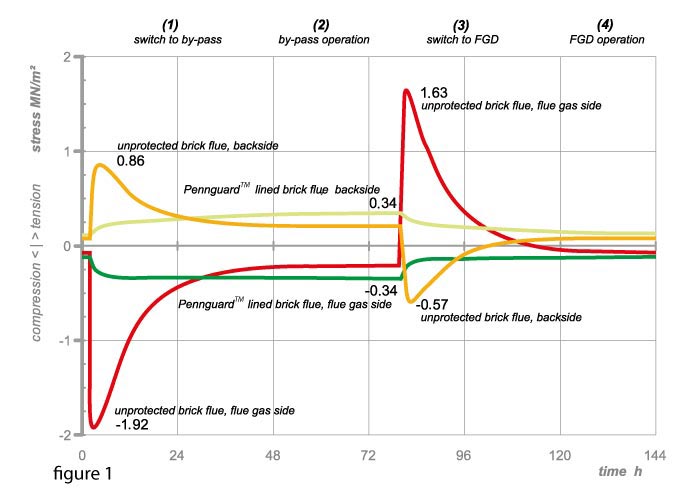Aberthaw power station
RWE npower is one of the leading electricity generators in England and Wales. The company has a diversified fleet of power stations, including coal fired, gas fired, and hydro units, as well as wind power. When the European Union created more stringent regulations, requiring all coal fired stations to limit their SO₂ emissions by 2008, RWE npower had to decide on the feasibility and economics of fitting Flue Gas Desulphurization (FGD) to its three large coal firing stations.
Based on its studies, RWE npower found that the Aberthaw Power Station near Cardiff, Wales, was a strong candidate for fitting FGD. The station has three 500 MW coal fired boilers. Much of the current firing utilises local Welsh anthracite coal. The station is located on the Bristol Channel, close to the Atlantic Ocean, which opens the possibility of using Sea Water FGD. RWE npower decided to pursue the option of Sea Water FGD for all three units.

The existing 153 m high concrete chimney of Aberthaw Power Station presented a special concern. The chimney, which was built in 1964, contained three sectional ceramic brick flues, each with an internal diameter of about 6.9 metres. Like the chimney itself, the flues had been in service for almost 40 years, but inspections showed that the brick barrels and the support floors were in good structural condition, despite some general wear and tear.
RWE npower decided that the existing chimney should continue to be used after the FGD retrofit, provided that the flues could be protected against the much more aggressive FGD operating conditions. It was decided to prepare the flues for FGD operation by installing the PennguardTM Block Lining System directly onto the existing brick surface.
The PennguardTM linings will protect the flues against acidic condensate, as well as thermal cycling and thermal shock. The PennguardTM Block Lining System was installed in the first of the three flues in the summer of 2004. The applications in the second and third flues are planned for 2005 and 2007.













